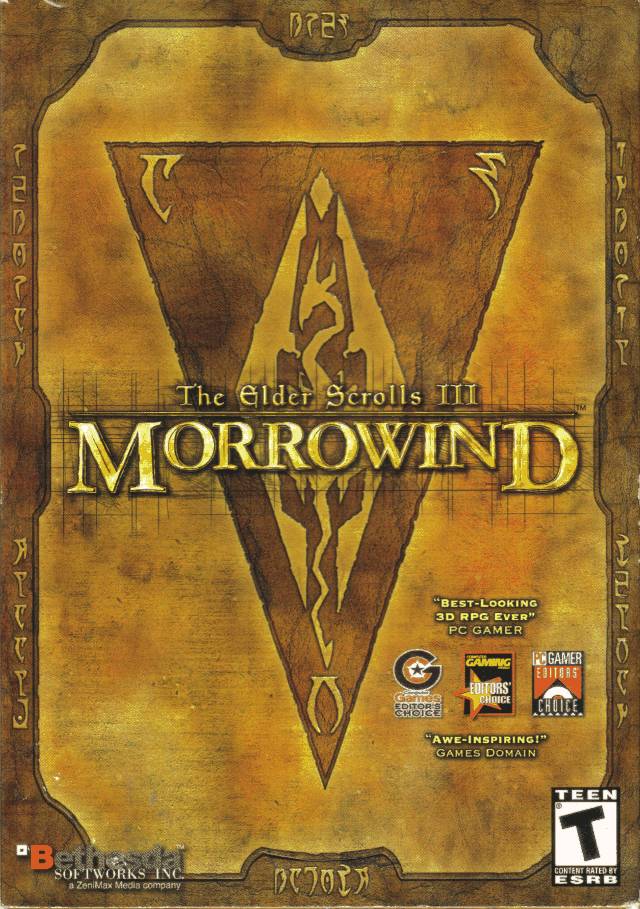The Elder Scrolls III: Morrowind Preview
Article Index
Over 6 years have passed since Daggerfall landed on store shelves. Even then my computer was low end for the time. Times never change it appears.
Morrowind, the sequel to the first infamous but now hallowed Daggerfall, is on the brink of being released.
While most previews start with the story, I'm going to begin with the accessible Construction Set which will accompany the game and then move on to how the game plays in detail, not that it is any less important. But first I'll introduce some astonishing facts that were included with this preview build. Take a look, they won't bite - unless you've already seen some of them floating around the 'net, in which case they'll only bite a little:
Chart of Astonishing Morrowind Facts
- Non-player characters (NPC's) in the World: 3,244
- NPC's in the world that you cannot kill: 0
- NPC's in the world that you can't kill if you want to finish the main quest: 1
- NPC's who begin the game being not alive: 63
- NPC's who start the game wearing no pants: 5
- Number of empty bottles per capita in Morrowind: 1.89
- Number of bottle recycling centers in Morrowind: 0
- Standard-sized novels' worth of text in Morrowind: 6
- Variations of creatures and nasties wanting to turn you into a fine paste: 217
- Hand placed objects in the world: 316,042
- Dungeons in the game: More than 300 (marketeering for 301... including basements, cellars and hobbit holes... just kidding - there are no hobbits, I looked.)
- Ninja Monkeys used in creating Morrowind: 6,404 (Ninja Monkeys are placeholders in the editor and represent random leveled creatures in which you specify what range of levels and/or possible creatures you want them to become when they are generated.)
- Polygon count for a fully armored Ordinator character: 5,000 (most games feature 2,000 poly characters... and of course, less)
- Polygon count for a skeleton: 5,000
- Total number of different characters you can create and play: 480 billion
- Total number of years to complete the game using every variation of character, completing it two times every single day: 657 million
- Total number of wonder women who's voices are used in the game: 1 (Lynda Carter's voice is used for the female Nord Characters in the game)
- Basic Spells in the game: More than 500
- Additional spells that can be created during the game using spellmaking: 150 billion (I won't go there)
- Talking crabs in Morrowind: 1 (now I have a mission!)
This is an immense game and that's being conservative. If Bethesda created an editor that was anything less than it is, it would have added a significant amount of time to the development schedule. Thankfully, it's a robust editor with options for tuning and manipulating every aspect of the game, while at the same time utilizing many built-in time-saving routines. I'll expound on that.
When building a dungeon, the walls will blend together seamlessly, often snapping into place with one another. The way the editor utilizes game physics is also amazing. Want water? Simply click the "Water" box, drag the land up above the water line, and water will rush in wherever it can. Take that, Trespasser. Objects on land such as grass can be randomly painted and appear naturally in place, with no adjustments necessary. With TES: Construction Set, tediousness is kept to a bare minimum and efficiency is exploited. Drag and drop objects into the render window, place them, edit their properties, create simple or complex scripts if desired using the built-in script editor - repeat and carefully wash hands when done. I'm not sure how creating such an expansive game could be easier than with this tool.
The editor uses the plug-in concept for adding new modifications to the game world. Based on a large master file which carries all of the object info, art, dialogue and AI for the game, the user simply takes from this the desired art and objects and creates their own world, be it a simple tavern on one end of town, or a massive fortress-dungeon in the sky (anyone remember Rygar?). These are created separate from the main game and can be a part of their own world or seamlessly added into Morrowind through the plug-in feature. Other players can download your plug-in and attach it to the game through a loading sequence, and in the off-chance they don't like it, can then remove it, leaving the game exactly as it was before the plug-in was added.
Developing your own worlds, buildings, characters or items in the Construction Set can be as detailed or simplistic as you wish, and with its relative ease of use, we should see an increasing curve of modifications begin to develop after the release of the game. After that brief but semi-in-depth peek at the editor, here's how the game looked in its nearing-completion stage.


